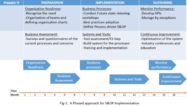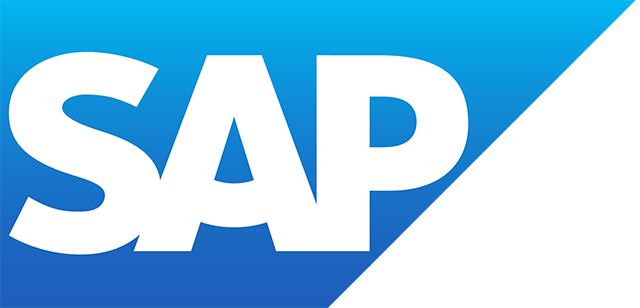SAP IBP
Filter By
Browse By
- SAP Analytics and AI
- SAP Application Development and Integration
- All SAP Application Development and Integration
- SAP ABAP
- SAP ABAP Development Tools
- SAP ABAP Test Cockpit
- SAP API Management
- SAP BAPI
- SAP Basis
- SAP BRF
- SAP Business Application Studio
- SAP CMS
- SAP Design Studio
- SAP Development Tools
- SAP DevOps
- SAP EAI
- SAP EDI
- SAP Extension Suite
- SAP Fiori
- SAP Fiori Elements
- SAP Integration Suite
- SAP Low Code Application Development
- SAP Low Code Automation
- SAP Netweaver
- SAP Release Management
- SAP UI5
- SAP Web Application Server
- SAP Web IDE
- SAP Business Process Management
- SAP Center of Excellence
- SAP CIO
- SAP Customer Experience
- SAP Data and Data Management
- All SAP Data and Data Management
- SAP BW
- SAP BW/4HANA
- SAP Crystal Reports
- SAP Data Archiving
- SAP Data Center
- SAP Data Governance
- SAP Data Integration
- SAP Data Migration
- SAP Data Quality
- SAP Data Services
- SAP Data Strategy
- SAP Data Visualization
- SAP Data Warehouse Cloud
- SAP DMS
- SAP Document Control
- SAP EIM
- SAP ETL
- SAP ETL Tools
- SAP HANA
- SAP HANA Administration
- SAP HANA Deployment Infrastructure
- SAP HANA Studio
- SAP Master Data
- SAP Master Data Governance
- SAP MDM
- SAP Enterprise Architect
- SAP Enterprise Asset Management
- SAP ERP
- SAP Finance
- All SAP Finance
- SAP Accounting
- SAP AR AP
- SAP Asset Accounting
- SAP Billing Systems
- SAP BPC
- SAP BRIM
- SAP Cash Management
- SAP Central Finance
- SAP Controlling
- SAP COPA
- SAP Cost Center Accounting
- SAP Currency Risk
- SAP e-invoicing
- SAP FICO
- SAP Finance Automation
- SAP Advanced Financial Closing
- SAP Financial Consolidation
- SAP Financial Planning
- SAP FX Risk
- SAP General Ledger
- SAP Global Tax Management
- SAP Hyperion
- SAP Order to Cash
- SAP Payment Processing
- SAP Profitability Analysis
- SAP Rebate Management
- SAP S/4HANA Finance
- SAP SWIFT Compliance
- SAP Treasury Management
- SAP Universal Journal
- SAP Governance Risk and Compliance
- SAP Human Capital Management
- SAP Intelligent Technologies
- SAP Platform and Technology
- All SAP Platform and Technology
- SAP Business Technology Platform
- SAP Cloud
- SAP Cloud Connector
- SAP Cloud Integration Platform
- SAP Cloud Migration
- SAP Cloud Platform
- SAP Cloud Providers
- SAP Cloud Strategy
- SAP Digital Signature
- SAP Container Platform
- SAP HANA Enterprise Cloud
- SAP Digital Asset Management
- SAP Smart Forms
- SAP HEC
- SAP Digital Integration Hub
- SAP Hyperscalers
- SAP Infrastructure
- SAP Messaging
- SAP Quality and Testing
- SAP Security
- SAP Spend Management
- SAP Supply Chain Management
- All SAP Supply Chain Management
- SAP APO
- SAP Asset Management
- SAP Business Network
- SAP Digital Manufacturing Cloud
- SAP Digital Twin
- SAP EWM
- SAP IBP
- SAP Inventory Management
- SAP Label Printing
- SAP Logistics
- SAP Manufacturing
- SAP Manufacturing Automation
- SAP MES
- SAP MII
- SAP MM
- SAP MRO
- SAP MRP
- SAP Order Management
- SAP Plant Maintenance
- SAP PLM
- SAP Production Planning
- SAP S&OP
- SAP SD
- SAP SPM
- SAP Supply Chain Planning
- SAP Track and Trace
- SAP Transportation Management
- SAP System Administration
Supply Chain Management: SAP IBP
Disruptive events are rapidly changing global supply chains. It is essential to create a new blueprint designed for agility and proactive response, ensuring unified planning, faster response, and visibility.
What Exactly Is SAP IBP?
SAP Integrated Business Planning (IBP) is cloud-based planning software for supply chain management. Using real-time information, it helps companies respond more quickly to market and business volatility. The objective is a process to translate desired outcomes into financial and operational requirements, maximizing profit and cash flow while minimizing risk.
SAP IBP consists of several modules which can be used independently as well:
- IBP for Demand
- IBP for Inventory
- IBP for Response and Supply
- IBP for Sales and Operations Planning (for fully integrated S&OP processes)
- IBP Supply Chain Control Tower (for real-time control, analysis, and management of supply chains)
Key features include:
Supply Chain Management: SAP IBP
Disruptive events are rapidly changing global supply chains. It is essential to create a new blueprint designed for agility and proactive response, ensuring unified planning, faster response, and visibility.
What Exactly Is SAP IBP?
SAP Integrated Business Planning (IBP) is cloud-based planning software for supply chain management. Using real-time information, it helps companies respond more quickly to market and business volatility. The objective is a process to translate desired outcomes into financial and operational requirements, maximizing profit and cash flow while minimizing risk.
SAP IBP consists of several modules which can be used independently as well:
- IBP for Demand
- IBP for Inventory
- IBP for Response and Supply
- IBP for Sales and Operations Planning (for fully integrated S&OP processes)
- IBP Supply Chain Control Tower (for real-time control, analysis, and management of supply chains)
Key features include:
- Supply Chain Control Tower: A visual dashboard of data and KPI’s across the enterprise supply chain.
- Demand Management: Full transparency with options for time series forecasting using algorithms and models.
- Stock Management: Optimize target inventory to exceed customer service levels, while balancing costs and risk.
The most important functions of SAP IBP are:
- Real-time planning for balancing supply and demand
- Forecasting functions
- Strong performance based on the SAP HANA platform
- User friendly with vivid visuals
- Ability to test and compare scenarios
- Connection with Microsoft Excel.
The Difference Between SAP IBP and APO
SAP IBP is the next-generation planning tool for supply chain management. It has new innovative features and functions compared to SAP Advanced Planning and Optimization (APO). SAP IBP offers a multi-echelon inventory solution that APO does not carry. Many of the aggregation/disaggregation features of IBP for S&OP are only theoretically possible in APO. It is estimated that SAP APO will be maintained until 2025, then SAP IBP will replace it.
Technical resource partners for consideration might be –SAP, Gib or Reveal.
Further Insights for SAPinsiders
- How to Build a Resilient and Efficient Supply Chain with Robust Sales and Operations Planning Using SAP IBP_S4HANA. Ulaganathan Balakrishnan, shares an article detailing experiences around implementing S&OP across many diverse industries.
- Leverage SAP Integrated Business Planning for Forecasting. John Yuva of SAPinsider and Marco Sisfontes-Monge, Managing Partner of Arellius Enterprises, conduct a Q & A with insights about how a robust system can adjust forecasting needs quickly based on changing market conditions.
- 5 Steps of S&OP to Achieve an Integrated Business Plan. Venkata Ramana Nethi from Schlumberger discusses understanding the framework, key activities, inputs, and outputs of S&OP with the SAP IBP
44 results
-

Leverage SAP Integrated Business Planning for Forecasting
Reading time: 9 mins
Robust is a difficult term to define. It’s something that is useful for the organization, something that makes sense. A robust demand forecasting process must be able to handle variances in demand and enable control your supply chain — with the intent of avoiding situations where you have 1,000 days of inventory or are missing…
-

- SAP IBP
 Premium
Premium
Evolving Supply Chain Control Towers
Reading time: 3 mins
Supply chain control towers are becoming a standard module in leading supply chain planning solutions. This specific module is marketed very prominently and, in some cases, is often marketed as THE capability required to run fully autonomous supply chains in the future. Suppose you are familiar with the features within the control tower functionality of…
-

Inventory Planning and Advanced Analytics
Reading time: 3 mins
Inventory planning- The constant balancing act Inventory planning is one of the most critical and most challenging aspects in supply chain planning. This means that implementing an effective inventory planning and management strategy is crucial for an organization to stay competitive in today’s dynamic global supply chain landscape. There is always room to bring more…
-
-

How to Build a Resilient and Efficient Supply Chain With Robust Sales and Operations Planning Using SAP IBP S4HANA
Reading time: 9 mins
Sales and operations planning (S&OP) helps companies estimate the demand for their products/services at an aggregate volume level using some form of forecasting method and incorporating inputs from the sales and marketing teams. Many organizations, in their race to embrace technology, ignore a key ingredient for the successful implementation of their S&OP: organizational readiness. Drawing…
-

- SAP IBP
 Premium
Premium
SAP’s Latest – Synchronized Planning – Linking Planning to Execution
In times of ever changing demand, companies need to make rapid changes to support a high degree of customer service including managing same day shipments. Hear how SAP’s Latest IBP and SAP S/4HANA innovations, Synchronized Planning connects your supply network plan with production planning and detailed scheduling. Released in October 2020 this innovation will help…
-

- SAP IBP
 Premium
Premium
Managing a Supply Chain in Chaos
Managing a supply chain in today’s environment is as unpredictable as it’s ever been. Changing demand, unpredictable global suppliers, and plant shutdowns. They can all upend any well made plan. SAP Integrated Business Planning for Supply Chain (SAP IBP) can provide functionality to provide predictable and understandable risk management to help smooth the chaos you…
-

- SAP IBP
 Premium
Premium
Transform Supply Chain and Financial Operations with Cross-Functional Analytics: The GKN Story
Many organizations struggle to translate their SAP data into actionable insights. Learn how GKN Automotive, the world’s largest supplier of driveline technologies to the automotive industry, has transformed its supply chain and optimized its systems by incorporating operational and financial analytics. This cross-functional reporting strategy enables the organization to focus on improving enterprise-wide KPIs and…
-
-

- SAP IBP
 Premium
Premium
Part 2: How to Implement IBP
This interactive session provides an overview of the Why, What, and How, of implementing SAP IBP. Learn how to implement IBP within 90 days by applying a combination of key design decisions, and an agile delivery model, which all starts and ends with the impact case. Through lecture, demonstration, use case examples, and interactive exercises,…
-

- SAP IBP
 Premium
Premium
Blueprint for digital supply chain transformation with SAP Integrated Business Planning
Ready to get started implementing SAP Integrated Business Planning? In this session, hear expert recommendations and advice based on real use cases about what works in an implementation, tips in taking a successful approach, and pitfalls to avoid. Walk away with a blueprint for how efforts put forth during project preparation create a better path…
-

- SAP IBP
 Premium
Premium
Case Study: Learn how Arla Foods integrated SAP IBP Demand Sensing in Short-term Demand Planning
Demand sensing is a concept for capturing and modelling various big data demand signals into intelligence to foresee short-term sales demand patterns and demand changes to proactively adapt your operational supply chain planning. Reduction of scrap, increased customer service levels, lower inventories, improved replenishment decisions and reduced time spent by the planners are the business…
Become a Member
Unlimited access to thousands of resources for SAP-specific expertise that can only be found here.
Become a Partner
Access exclusive SAP insights, expert marketing strategies, and high-value services including research reports, webinars, and buyers' guides, all designed to boost your campaign ROI by up to 50% within the SAP ecosystem.
Upcoming Events
Related Vendors
Your request has been successfully sent


